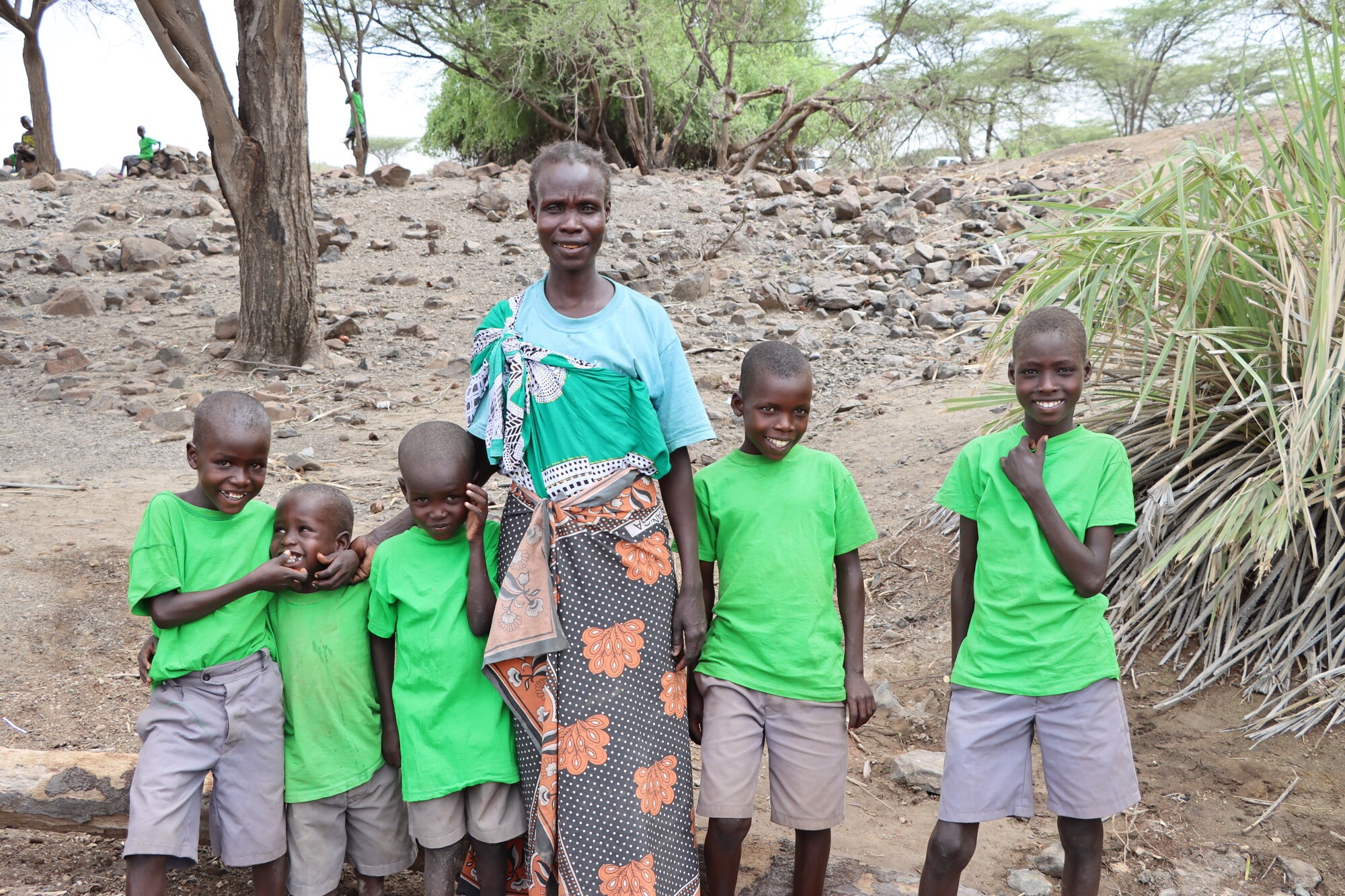As the world battles climate change, Mary’s Meals provides much-needed stability for children
Scorched land, dusty plains and dry riverbeds stretch for as far as the eye can see in the northwestern region of Turkana, Kenya.
Like many regions across East Africa, Turkana faces seismic challenges with hunger and poverty. Kenya is currently one of 10 countries with more than one million people in the second most severe level of acute food insecurity (IPC Phase 4 – Emergency) – nearly a fourfold increase since 2021. The country has also witnessed a 10% rise in the number of children under five years old suffering from severe malnutrition over the past year.
Turkana’s challenging environment makes life very unpredictable, and its people have to be both flexible and able to adapt in order to survive. Three years of drought – the worst of its kind in 40 years – have laid waste to the county’s crop production, livestock health and household purchasing power. Turkana – where agriculture and livestock are main sources of income – is one of the counties worst affected by the unprecedented drought, and thousands of children have been left hungry, going days without food.
 Dr Samuel Derbyshire, a social anthropologist who works in northern Kenya, explains some of the reasons why weather changes over the past few decades have impacted the ability of people in the region to have enough food to eat and why integrating nutrition and education is vital in an area like Turkana.
Dr Samuel Derbyshire, a social anthropologist who works in northern Kenya, explains some of the reasons why weather changes over the past few decades have impacted the ability of people in the region to have enough food to eat and why integrating nutrition and education is vital in an area like Turkana.
He says: “In the past, when there was a lot of rain, a lot of grass, your livestock were producing a lot of milk. You could store that milk; you could make it into powdered milk; you could store animal fats and oils. You could accumulate quite a significant store for the dry season, which you knew was coming. But now, because the wet season is far less pronounced, it's harder to do that. You're always in this liminal situation where you're not able to accumulate surplus food. You’re never really prepared for when the dry season comes.
“I think a lot of people in the past were having to decide between pursuing improved food, nutrition or sending children to school … It was almost considered that sending a child to school was a loss, so children having access to school meals is fundamental. It is so important because it removes that worry. If you're too hungry to learn, all other possibilities are closed off to you as a young person. Getting an education and moving forward in life has to be built on a basic situation of being nutritionally sound, not being hungry.”
We have been serving vital meals to children in Kenya since 2005 together with our trusted partner Caritas Lodwar, encouraging children who are extremely vulnerable to food insecurity to attend school through the provision of school meals. Until late last year, our meals were only served to pre-school children attending Early Childhood Development and Education centres across Turkana. Now, tens of thousands of primary school children can also count on that same promise of a daily meal – and the impact has already been significant. Recent research found that before our meals were served in primary schools, 74% of children reported being hungry at school. Three months after the program began, that dropped to just 3%.
 Epeot Kiyonga's children are just some of the many thousands who benefit from the school feeding program. Three of her eight children have died and Epeot is the family’s sole provider. Years of drought wiped out most of her livestock, so she spends her days collecting firewood and carrying it for miles to sell to provide for her children. Epeot also risks her life digging wells to secure what water she can for her family.
Epeot Kiyonga's children are just some of the many thousands who benefit from the school feeding program. Three of her eight children have died and Epeot is the family’s sole provider. Years of drought wiped out most of her livestock, so she spends her days collecting firewood and carrying it for miles to sell to provide for her children. Epeot also risks her life digging wells to secure what water she can for her family.
Against this extremely challenging backdrop however, her five children, ranging in age from three to seven, are thriving at Kaite Kapel ECD in Turkana. They are energetic, full of life, and love to learn and play with their friends.
Just $31.70 feeds a child for a whole school year.
